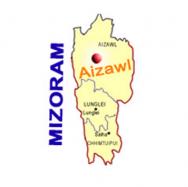 Mumbai, Aug 16
Mumbai, Aug 16 : Encouraged by recent steps to promote investment in India's northeast, representatives of industry and business in the country's financial capital here have agreed to boost the region's economy.
Following a two-day workshop here on business opportunities in the northeast, the Indian Merchants Chamber (IMC), one of the country's oldest and most influential chambers of commerce, said it would send a high-level group to the region to explore specific areas of investment to help promote its unique business opportunities.
Business representatives described presentations by political leaders, top officials, entrepreneurs, journalists and Assam Governor Lt. Gen. (retired) Ajai Singh as "an eye-opener" because they had been unaware of attractive transport subsidies, tax benefits and plans to introduce VAT in all eight states of the region in a few months.
The IMC said it could consider partnerships with business organisations in the northeast and focus on public and corporate governance.
IMC president Nanik Rupani announced at the workshop that ended Sunday that he was prepared to take a group of senior industrialists from Mumbai to the region to take a look at ground realities and opportunities.
In addition, said IMC's financial advisor Kiran Nanda, the organisation could connect raw material producers in the region, such as limestone producers and those with medicinal and aromatic plantations, with manufacturers and exporters here.
"Businessmen don't need invitations, they need information," said Viral Shah, a chartered accountant, supporting the view that the northeastern states needed to lobby seriously in Mumbai.
"It is not just the big industrialists who should come, you need to disseminate information about the region on a sustained basis here with small and medium traders and producers."
The head of an exporters association said he planned to take a large number of potential investors to the northeast after hearing of central and state government initiatives and the opportunities to trade with Bangladesh and Myanmar.
The workshop, organised by the Centre for Northeast Studies and Policy Research in collaboration with IMC, drew over 100 participants who interacted with senior area representatives including the economic advisor to the Assam chief minister and cabinet ministers from Assam and Tripura.
Other participants were Kamal Taori, secretary of the North Eastern Council, and Surajit Mitra, joint secretary in the ministry for the development for the northeastern region in New Delhi.
Those who attended included bankers, financial specialists and executives from the corporate world such as Reliance Industries and ITC, business specialists from the US and Taiwan and senior editors, local traders and environmental activists.
Assam's Planning and Development Minister Hemanta Biswa Sarma was at pains to point out that insurgency was on its way out and the state was determined to pull out all stops for investors.
Tripura's Industry and Agriculture Minister Tapan Chakrabarty spoke of his state's strengths in governance and its focus on rubber, bamboo and medicinal plant products.
Encouraged by the response, conference organisers said more interactions between business and government were planned to sustain the proposed initiatives.



























